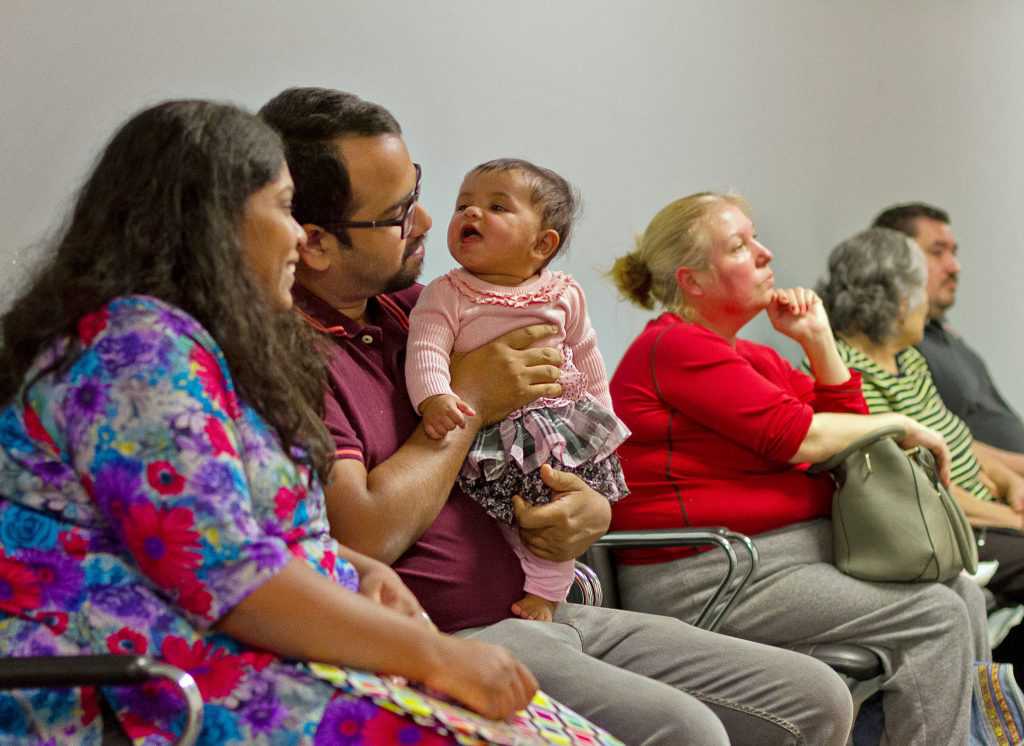
WASHINGTON — A flurry of actions by President Trump and Congress against the Affordable Care Act injected confusion and uncertainty into the final weeks of the annual period to sign up for coverage, and many, but not all, enrollment groups were reporting a drop in people seeking insurance as the deadline loomed on Tuesday.
The actions include the executive order that Mr. Trump signed hours after his inauguration, directing federal agencies to take all possible steps to minimize the “burdens” the law imposes, and House and Senate votes to begin the process of repealing the law. The Trump administration also scaled back advertisements that encourage people to sign up for health insurance under the law, although after a public backlash late last week, the administration decided not to pull the ads altogether.
Interviews with about two dozen enrollment counselors and insurance agents around the country suggested that in some states, including Alaska, New York and Washington, a steady flow of people were signing up until the last minute. Yet in many other places, counselors who help people sign up for insurance under the seven-year-old law said that enrollment had flattened in recent weeks and that the burst of activity they had come to expect at the end of open enrollment had never happened this year. All said their customers were worried about the future of their coverage and, in many cases, conflicted about whether to buy it for fear that they would soon lose it.
“Some people ask, ‘What’s the point if the law is going to be repealed?’” said Emily Black Bremer, an insurance agent in Clayton, Mo., outside St. Louis. “Should they rush to get in before the A.C.A. is cut off? Should they give up because it’s all going away? It’s a tricky situation.”
WASHINGTON — A flurry of actions by President Trump and Congress against the Affordable Care Act injected confusion and uncertainty into the final weeks of the annual period to sign up for coverage, and many, but not all, enrollment groups were reporting a drop in people seeking insurance as the deadline loomed on Tuesday.
The actions include the executive order that Mr. Trump signed hours after his inauguration, directing federal agencies to take all possible steps to minimize the “burdens” the law imposes, and House and Senate votes to begin the process of repealing the law. The Trump administration also scaled back advertisements that encourage people to sign up for health insurance under the law, although after a public backlash late last week, the administration decided not to pull the ads altogether.
Interviews with about two dozen enrollment counselors and insurance agents around the country suggested that in some states, including Alaska, New York and Washington, a steady flow of people were signing up until the last minute. Yet in many other places, counselors who help people sign up for insurance under the seven-year-old law said that enrollment had flattened in recent weeks and that the burst of activity they had come to expect at the end of open enrollment had never happened this year. All said their customers were worried about the future of their coverage and, in many cases, conflicted about whether to buy it for fear that they would soon lose it.
“Some people ask, ‘What’s the point if the law is going to be repealed?’” said Emily Black Bremer, an insurance agent in Clayton, Mo., outside St. Louis. “Should they rush to get in before the A.C.A. is cut off? Should they give up because it’s all going away? It’s a tricky situation.”
The number of people who signed up for or renewed coverage during this fourth enrollment period will be an important sign of whether the individual insurance market will remain stable over the coming months as Republicans work to repeal the law and try to come to a consensus on what to replace it with. A larger pool of enrollees is more likely to include healthier people whose premiums can help pay for the care provided to those who are sick.
Over the last few weeks, Mr. Trump has promised to replace the law with better, cheaper coverage “for everybody,” while Republicans in Congress have struggled to come up with a plan that could come close to meeting the president’s goals and have expressed growing alarm at Mr. Trump’s demand for speed. Public polls have also shown growing support for the existing law.
As of Jan. 14, the last time that the Obama administration released data, about 8.8 million people had signed up for coverage through HealthCare.gov, the federal insurance marketplace serving 39 states. (The other states run their own marketplaces.) That is about 100,000 more people than were enrolled at the same point last year.

The sign-up period started on Nov. 1, just before the election, and many enrollment counselors said they saw many people seeking coverage through Dec. 15, the deadline to buy it for January. In fact, the Obama administration said in December that more people — 670,000 — enrolled on Dec. 15 than on any other day since the marketplaces opened for business in 2013.
“We had a spike of interest that lasted through December,” said Karen Egozi, the chief executive of the Epilepsy Foundation of Florida, one of several dozen nonprofit groups that won federal grants to help people sign up for insurance through the federal marketplace. “But January came, and we’ve had a huge drop. We are seeing a major slowdown.”
Ms. Egozi said her group had completed 64 percent fewer enrollments from Jan. 1 to Jan. 29 than over the period last year. According to federal enrollment data, more than 1.6 million people in Florida had enrolled in private health plans through HealthCare.gov from Nov. 1 to Jan. 14.
Allen Gjersvig, the director of navigator and enrollment services at the Arizona Alliance for Community Health Centers, said a number of appointments with enrollment counselors had been canceled after Mr. Trump signed the executive order regarding the health law. A few people, he said, told counselors that they thought the law’s tax penalty for going without insurance would no longer be enforced.
“When we called the folks and said nothing has changed yet,” Mr. Gjersvig said, “some decided to come in after all. But others said, ‘Nope, it’s just a matter of time before this law goes away.’”
The slowdown was not universal. In Alaska, Jessie Menkens, who oversees a widespread enrollment effort through her job at the Alaska Primary Care Association, said, “We were bracing for diminished participation, but it’s been the opposite.” In New York, Donna Frescatore, the executive director of the state’s insurance marketplace, said it had seen “unprecedented volume,” including a surge of enrollments over the last few weeks.
And in Texas, enrollment counselors at the Community Council of Greater Dallas have met with 60 percent more people than last year, said Sonia White, the group’s director of coalitions and planning.

“It’s been by far our busiest open enrollment period,” said Ms. White, adding that the group had met with 1,200 people since the inauguration and 110 on Monday alone. On the other hand, she added, two groups that contract with hers to enroll people in rural Texas counties have reported a drop-off in interest this month.
“They are both in pretty significantly conservative areas,” Ms. White said.
Confusion, though, has prevailed, with Mr. Trump often repeating his pledge to repeal the law and a handful of Republicans proposing complicated replacement plans, none of which would most likely cover as many people.
Thank you for subscribing.
An error has occurred. Please try again later.
You are already subscribed to this email.
View all New York Times newsletters.
“People are asking, ‘Is my coverage only good for this month?’” said Shelli Quenga, whose nonprofit group, Palmetto Project, has a federal grant to help with enrollment in South Carolina.
Antoinette Kraus, director of the Pennsylvania Health Access Network, said, “When the headline is ‘Repeal Moving Forward,’ people just panic and assume, ‘Oh my God, I just lost my health coverage.’”
Kevin J. Counihan, the former chief executive of the federal marketplace, said that its call center had received tens of thousands of calls from worried consumers in the weeks before Mr. Obama left office. Among the callers, he said, were people worried that they would not be able to receive treatment for pre-existing conditions and parents worried that their children would lose coverage.
Dee Porter, chief executive of the Oklahoma Primary Care Association, which won a federal grant to help with enrollment, said that some Oklahomans, including a woman facing a year and a half of expensive treatment for cancer, were “uncertain about starting medications or therapies that require more than a few months of treatment.”
As of late December, enrollments in Oklahoma were up 6 percent compared with last year, according to data from the Obama administration. But while enrollment counselors continued to see “strong interest” over the final week of open enrollment, said Steve Goldman, the primary care association’s lead navigator, many consumers held back.
“Insurance is supposed to bring folks certainty and peace of mind,” he said. “But now insurance is a big question mark.”
We’re interested in your feedback on this page. Tell us what you think.




























